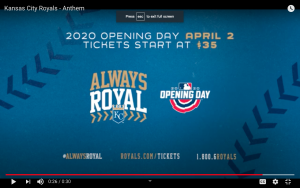Tech Focus: Production Music, Part 1 — How the Pandemic Has Changed the Choices for Sports
Suppliers are seeking the right sound for the return of live coverage
Story Highlights
Production music — the vast well of styles, sounds, genres, and emotions that underscores televised sports — has been both a hotbed of legal turbulence (assertions of copyright infringements and DCMA take-downs abound over licensing issues) and a generically predictable process in which NBA shows reflexively get bassy hip-hop and baseball gets crunchy rock guitars. Between the leading music houses servicing the major leagues and the upstart indie music mills whose home studios churn out some of the more fashion-forward (and royalty-free) sounds favored by online and margin sports, broadcasters and venue-sound specialists have literally millions of tracks, clips, and stems to choose from.
But COVID-19 changed everything. Today, music supervisors and library managers alike are trying to figure out exactly what the music for a suddenly sports-less world and the anticipated (and bumpy) return of live sports coverage should sound like.
Different Approaches To Engage Fans
“The big question right now: how do we re-engage the fanbase [of] sports, and how do we keep them engaged until sports does come back,” asks Whitney Arnold, VP, music services, Stephen Arnold Music, whose production-music arm The Vault has supplied production music for ESPN, the Denver Nuggets’ Altitude Sports, and Golf Channel. “We don’t know when certain sports will be coming back, so what kind of music and emotions do we need to keep interest in a sport up until it does? And these are emotions around sports, so everyone is being extra cautious around that.”

The Kansas City Royals “Opening Day” promo features nostalgic footage and a country-ish guitar score.
A pair of television spots that the company recently completed for the Kansas City Royals underlines the uncertainty in trying to gauge fan sentiment. In “Opening Day,” Royals CEO John Sherman talks nostalgically over footage of the team’s glory days in the 1970s and ’80s, with a country-ish guitar leading into the resolve of a jubilant kid in the stands. “Hot Dog,” on the other hand, takes a more techno-stylized route: data graphics are overlaid on live action to display a baseball’s trajectory and velocity off Jorge Soler’s bat, propelled by an action-film underscore.
“Everyone is looking for the right ways to tap into the emotions around sports at a time like this,” says Arnold. “There’s no roadmap for this. It has never happened before.”
A crisis moment does leave many wondering how best to face the emotions around the loss of sports during the pandemic, but each sports’ core themes remain mostly clear, says Matthew Gutknecht, senior account director, sports entertainment, APM Music.
“You watch some of the other events that the leagues have had to adapt for the moment, like uniform and schedule reveals, and, if not for the context of the pandemic, you’d never know anything was going on,” he observes, suggesting that viewers find some comfort in the familiar trappings of televised sports, including the music chosen. “[For] now, it’s business as usual at the NFL. But everyone is trying to strike the right tones with music to complement the usual sounds.”
Gutknecht says a very broad tonal palette will be necessary as music directors plot out return strategies for teams and leagues: “One team I work with has six different contingency plans, each with its own music choices. Those strategies are constantly being tweaked as they move closer to reopening.”
As sports edge toward a return without fans in the stands, teams and venues have been considering how to make the aural ambience of arenas and stadiums more familiar to the athletes. Sound Ideas Sales Manager Peter Alexander has been fielding inquiries along those lines, with teams and venues asking whether realistic crowd sounds can be compiled to be played through venue PA systems: “There’s a desire to help normalize the environment using crowd sounds to make it feel like there’s an audience there.”
It would be a challenge to make that realistic, however, requiring many hours of sound comprising many different elements to avoid sounding “canned.”
“It would be a sound-design issue,” Alexander suggests. “You’d need different types of crowds for home and away; you can’t just loop the same crowd over and over. Venues have their own sound departments these days, and they have some amazing PA systems, so, technically, it could be done. But these are just basic inquiries for now. No one has actually done it.”
It’s not all COVID-19 all the time, though. Stephen Arnold Music provided an extended promo spot for last year’s Augusta Women’s National Amateur match, which aired on NBC Sports/Golf Channel. It’s a predictably anodyne Aaron Copeland-esque underscore beneath an all-female cast, complementing the ladies on the links. But the kicker is, it’s also an all-female string section in the orchestra performing it. Note to major-league front offices: diversity and inclusion can come through many different doors.
Click here for Tech Focus: Production Music, Part 2 — Music Libraries Offer Lots of Choices for Sports
